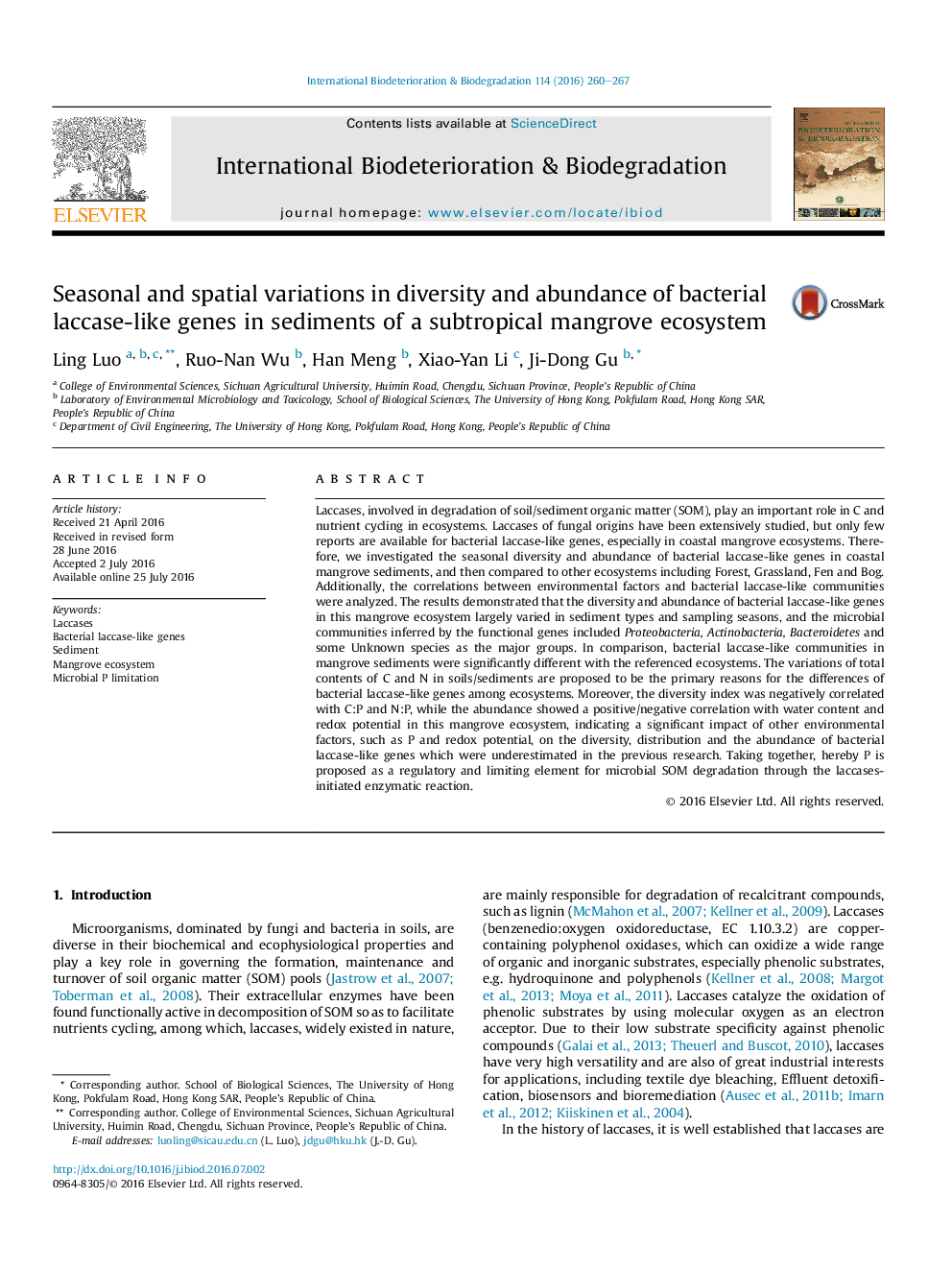| Article ID | Journal | Published Year | Pages | File Type |
|---|---|---|---|---|
| 4364150 | International Biodeterioration & Biodegradation | 2016 | 8 Pages |
•Diversity and abundance of bacterial laccase-like genes in mangrove ecosystem showed strong seasonal and spatial variations.•Proteobacteria, Actinobacteria, Bacteroidetes and unknown species are the major laccase-like bacteria in this ecosystem.•Bacterial laccase-like communities in mangrove sediments were significantly different with the other ecosystem.•Variations of total C and N in soils/sediments are the primary reasons for the differences of bacterial laccase-like genes.•The abundance is correlated with water content and redox potential in this mangrove ecosystem.
Laccases, involved in degradation of soil/sediment organic matter (SOM), play an important role in C and nutrient cycling in ecosystems. Laccases of fungal origins have been extensively studied, but only few reports are available for bacterial laccase-like genes, especially in coastal mangrove ecosystems. Therefore, we investigated the seasonal diversity and abundance of bacterial laccase-like genes in coastal mangrove sediments, and then compared to other ecosystems including Forest, Grassland, Fen and Bog. Additionally, the correlations between environmental factors and bacterial laccase-like communities were analyzed. The results demonstrated that the diversity and abundance of bacterial laccase-like genes in this mangrove ecosystem largely varied in sediment types and sampling seasons, and the microbial communities inferred by the functional genes included Proteobacteria, Actinobacteria, Bacteroidetes and some Unknown species as the major groups. In comparison, bacterial laccase-like communities in mangrove sediments were significantly different with the referenced ecosystems. The variations of total contents of C and N in soils/sediments are proposed to be the primary reasons for the differences of bacterial laccase-like genes among ecosystems. Moreover, the diversity index was negatively correlated with C:P and N:P, while the abundance showed a positive/negative correlation with water content and redox potential in this mangrove ecosystem, indicating a significant impact of other environmental factors, such as P and redox potential, on the diversity, distribution and the abundance of bacterial laccase-like genes which were underestimated in the previous research. Taking together, hereby P is proposed as a regulatory and limiting element for microbial SOM degradation through the laccases-initiated enzymatic reaction.
